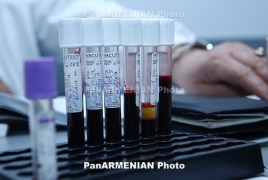
Australian researchers have developed a new method of monitoring leukaemia cells in the blood, it was announced on Wednesday, January 24, according to Xinhua.
The team from the University of Western Australia (UWA) invented the technique, named Immuno-flowFISH which enabled the leukaemia cell to be seen using a microscope.
It allows more than 20,000 cells to be assessed in a single test, a significant improvement on current methods which allow the assessment of only a few hundred cells.
The method has been tested on patients with chronic lymphocytic leukaemia, the most common type of leukaemia in Australia.
Kathy Fuller, a scientist from UWA's Translational Cancer Pathology Laboratory, said that assessing the chromosomes in leukaemia cells was crucial in determining the best treatment and likely outcome for a patient.
She said the test, which was named to reacknowledge the three components of the test; "immune" for immunology testing used to identify leukaemia cells, "flow" because a imaging flow cytometer is used and "FISH" for the name of the test that identified chromosomes, could identify cancer even when there was few cells present.
"This will allow it to be used as a sensitive test to monitor the cancer," Fuller said in a media release on Wednesday.
"The imaging cytometer can analyse samples at a rate of up to 2,000 cells per second which means we can investigate a large number of cells in a relatively short amount of time, giving us greater sensitivity."
The research team is now working to make the test compatible with other types of leukaemia with the hope that it will one day be used to monitor chromosomes in all types of blood and bone marrow cancers.

